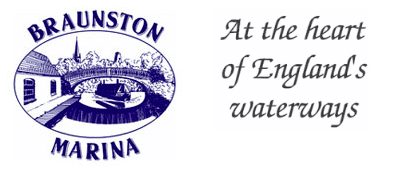 Long gone are the days, thank goodness, when toilets discharged their contents directly into the canal or river. Toilet waste must be kept on board until emptied at appropriate disposal points. It is contained either in a small portable cassette or a large fixed holding tank.
Long gone are the days, thank goodness, when toilets discharged their contents directly into the canal or river. Toilet waste must be kept on board until emptied at appropriate disposal points. It is contained either in a small portable cassette or a large fixed holding tank.
1. Cassette toilets.
These are favored by many for the ease in emptying at the frequent, free to use, sanitary disposal stations throughout the waterways system.
In its simplest and cheapest form it consists of a free-standing unit with a lidded plastic bowl with a small reservoir for flushing water, clipped on top of a sealable plastic cassette. Waste drops directly into the cassette which can be detached and carried like a briefcase to the disposal sluice. It can even be emptied down an ordinary WC. Odour can be a problem but proper use of chemical fluid and frequent emptying keeps this to a minimum. Spare cassettes or even the whole unit can be stored away in a cupboard.
More sophisticated forms come fixed in position and can have ‘proper’ ceramic bowls, water traps and electric water flushing from the boat’s supply system. They can even be flushed to remotely sited cassettes (eg at the stern) by vacuum or compressed air. Because of the larger water flush these cassettes are usually much bigger and so are somewhat heavier to transport. On-board odour should never be a problem.
2. Holding Tank, or ‘Pump Out’, Toilets.
Some boaters find the idea of cassette toilets a little distasteful and prefer the holding tank type where the contents require pumping out, at very much longer intervals than cassettes, at a special facility found at most marinas and at many boatyards. There is a charge, often quite substantial, for this service. On the other hand, some don’t like the thought of the waste remaining on board for many weeks, sometimes months, between emptying. Emptying can be a ‘pain’ if your berth is half a day’s cruise from the nearest pump-out station or impossible if your boat is immobilised through break down, icing up, or a canal ‘stoppage’. Many have an ‘emergency’ cassette toilet for these eventualities.
The simplest form is the gravity-operated (or somewhat indelicately termed ‘dump-through’) toilet where the fixed plastic or ceramic bowl is sited directly over a large tank. The waste drops straight down through a flap. In order to keep the tank from filling up too quickly with flushing water, the bowl may be flushed by hand pump using the fluid already in the tank rather than with clean water from the boat’s system. This can become unpleasant as the tank fills up. Odour is frequently experienced with dump-throughs.
As with cassettes, more complex and much more pleasant to use systems are available with clean water flushing, water traps, and intermediate ‘macerator’ tanks where the waste is reduced to a fine slurry before being forced by vacuum or compressed air (or water) to a remote tank. There should be no odour problem (except when pumping out) but these systems can suffer mechanical breakdown or blockages which are unpleasant and often not straightforward to deal with.
Quick links to more information in this section: –
